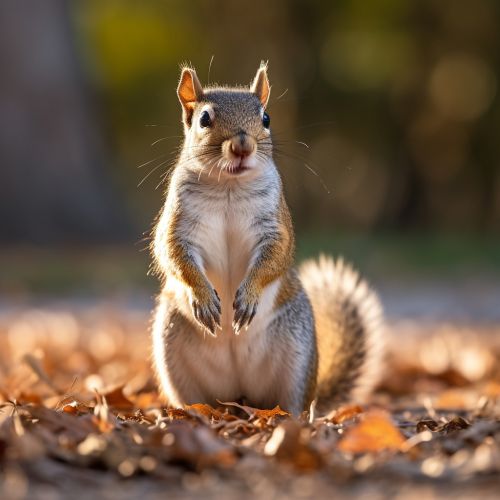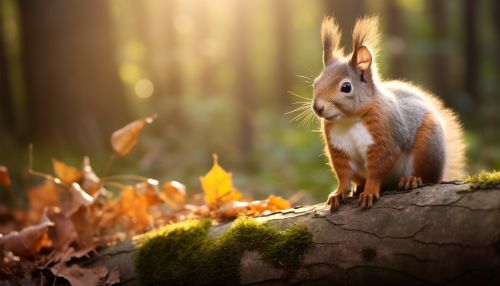Diurnality
Overview
Diurnal behavior is a form of animal activity pattern that is primarily associated with the daylight hours. This is in contrast to nocturnal behavior, which is associated with the night, and crepuscular behavior, which is associated with twilight hours. Diurnal animals are active during the day and sleep at night, following the cycle of the sun. This pattern is observed in many species across the animal kingdom, including mammals, birds, reptiles, and insects.


Evolution and Adaptation
The evolution of diurnality is believed to be a result of various ecological and evolutionary pressures. For instance, the availability of light during the day allows for better visibility, which can be advantageous for activities such as foraging and predator avoidance. Additionally, the warmth provided by the sun can be beneficial for ectothermic animals, which rely on external sources of heat to regulate their body temperature.
Diurnal animals have evolved various adaptations to thrive in daylight conditions. These include specialized sensory organs, such as highly developed eyes for visual acuity and color perception. For example, birds of prey like eagles and hawks have exceptionally keen eyesight to spot prey from great distances during the day.
Diurnality in Different Animal Groups
Mammals
Many mammals exhibit diurnal behavior. This includes most primates, such as humans and monkeys, as well as certain species of rodents and ungulates. These animals typically rest or sleep during the night and are active during the day, engaging in activities such as feeding, mating, and social interaction.
Birds
The majority of bird species are diurnal. They use the daylight hours for foraging, mating, nest-building, and other activities. Some birds, like the peregrine falcon, are known for their exceptional visual acuity, which allows them to spot and catch prey during the day.
Reptiles and Amphibians
Many reptiles and amphibians are diurnal, especially those living in warmer climates. These include various species of lizards, turtles, and frogs. The heat of the sun helps these ectothermic animals to regulate their body temperature.
Insects
A large number of insect species are diurnal, including many types of bees, butterflies, and ants. These insects typically forage for food, mate, and engage in other activities during the day.
Impact on Behavior and Physiology
Diurnality has a significant impact on an animal's behavior and physiology. The animal's daily activities, such as feeding and mating, are typically synchronized with the daylight hours. This synchronization is regulated by an internal body clock, known as the circadian rhythm, which is influenced by light and darkness.
Physiologically, diurnal animals often have adaptations that enable them to function optimally during the day. For instance, they may have highly developed visual systems for better daylight vision, or metabolic adaptations for daytime activity.
Human Diurnality
Humans are primarily diurnal, with most of our activities occurring during the day. This pattern is largely influenced by our circadian rhythm, which regulates sleep and wakefulness, among other physiological processes. However, modern lifestyle and societal demands often disrupt this natural pattern, leading to conditions such as sleep disorders and jet lag.
